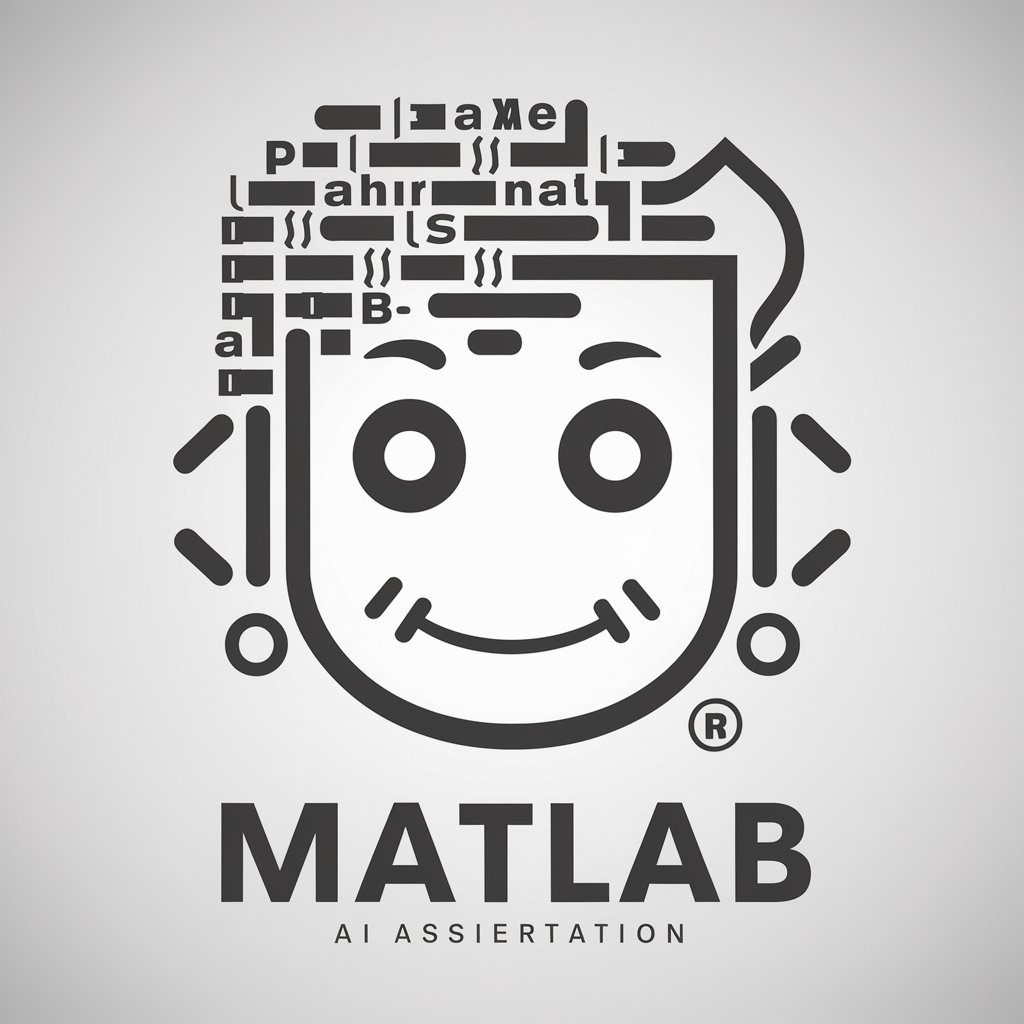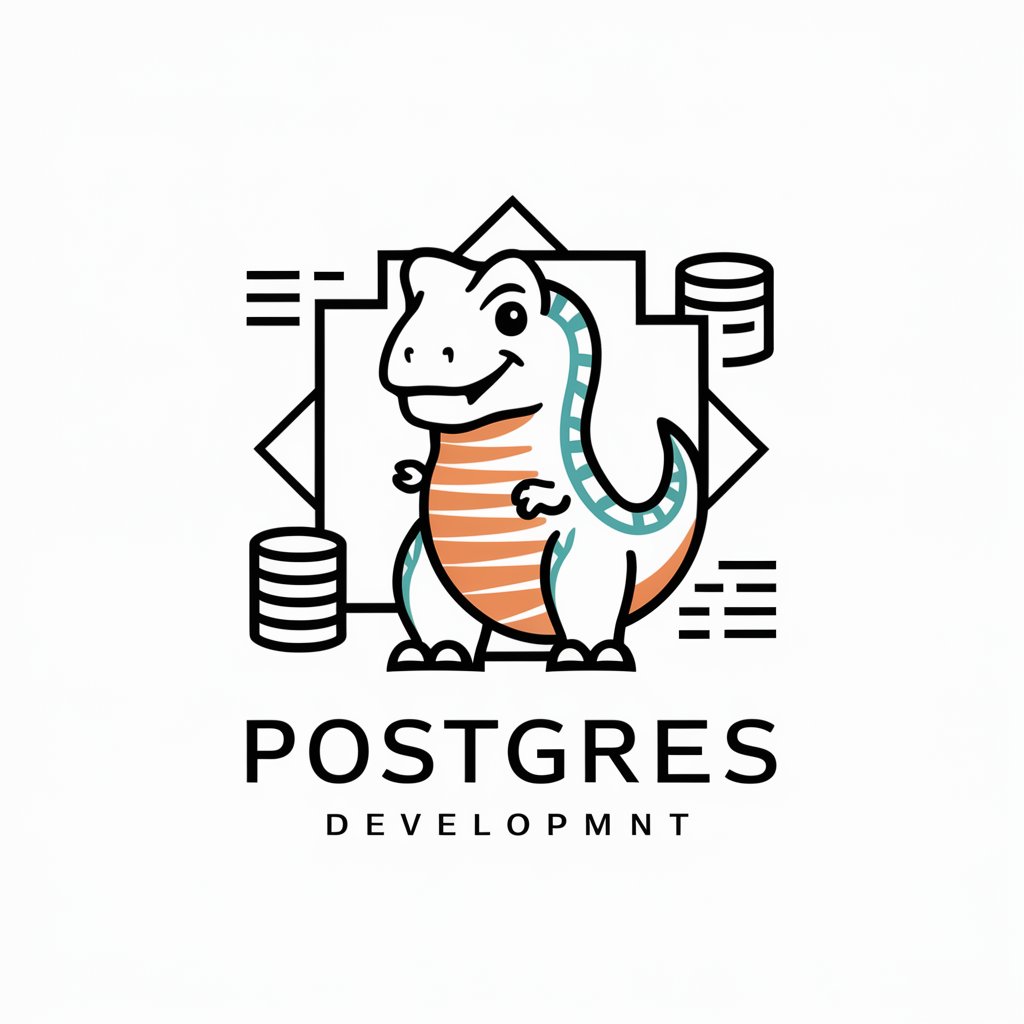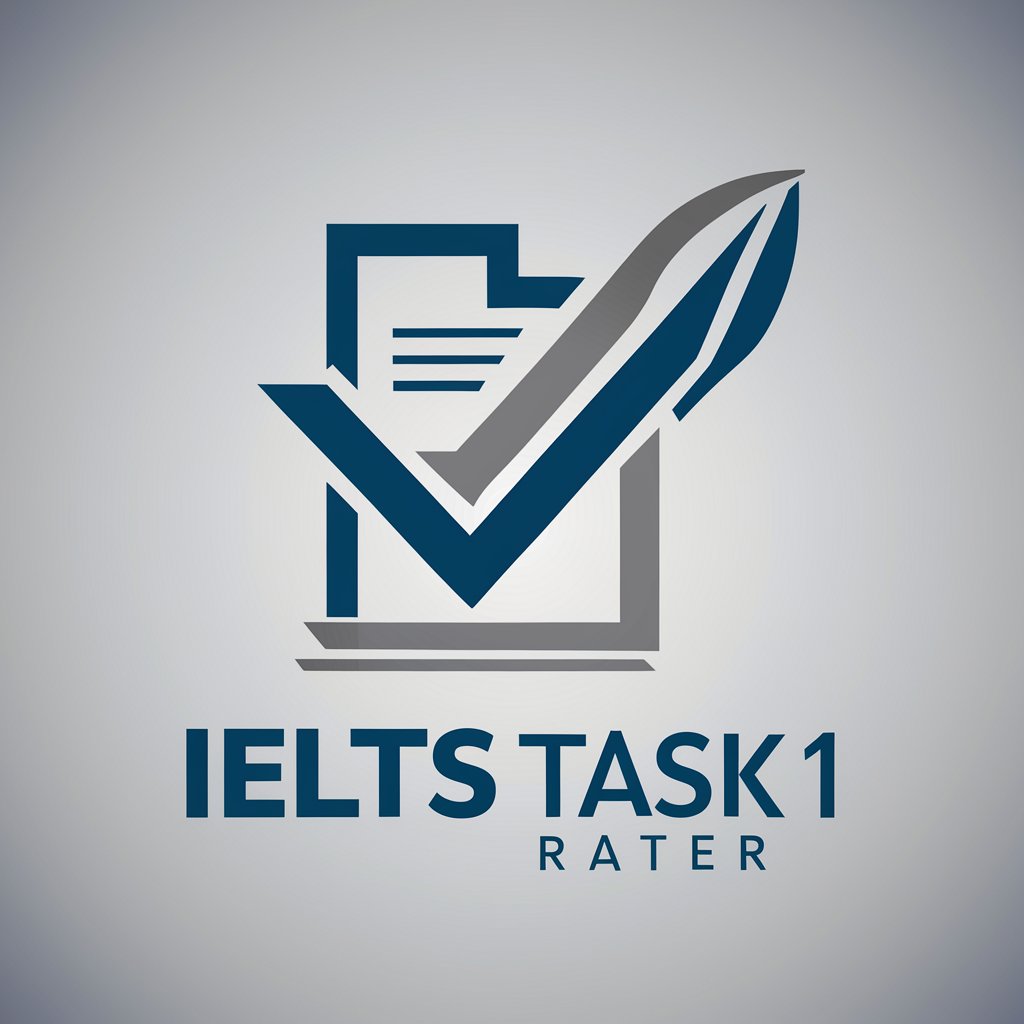
Matlab-AI MATLAB coding assistant
AI-powered MATLAB assistant for code generation, optimization, and deployment.

🟠 Advanced MATLAB assistant and code generator, trained with the latest knowledge and docs.
⚙️ Define a matrix and perform operations
📊 Write a MATLAB script for plotting data
🪲 Find any bug or improvement in my code
💡 Teach me a useful skill or trick in MATLAB
Get Embed Code
Introduction to MATLAB
MATLAB (MATrix LABoratory) is a high-level programming language and interactive environment designed for numerical computation, visualization, and programming with a first-class focus on matrices and arrays. It combines an interactive desktop environment (IDE with editor, debugger, workspace and plotting windows) with a large collection of built-in functions and specialized toolboxes for domains such as signal processing, control systems, image processing, machine learning, and more. Design purpose and core ideas: - MATLAB is array-oriented: vectors and matrices are the fundamental data types, which makes expressing linear algebra, numerical algorithms, and data transforms concise and natural. - Rapid prototyping and exploration: an interpreted language with a REPL-style workflow lets you iterate quickly on ideas, inspect intermediate results visually, and refine algorithms before production. - Domain toolboxes: MATLAB ships with (and sells) specialized toolboxes that provide domain-specific algorithms, blocks (Simulink), apps, and workflows so subject-matter experts can be productive without reinventing low-level code. - Integration & deployment: MATLAB supports calling external C/C++/Java/Python code, generating C/C++ or HDL for embedded deployment, buildingMatlab introduction and functions standalone executables, and packaging apps for non-MATLAB users. Short examples that illustrate typical MATLAB usage: 1) Matrix math and plotting (quick interactive check): A = [3 2; 1 4]; b = [5; 6]; x = A\b; % solve linear system plot(0:0.1:2*pi, sin(0:0.1:2*pi)); 2) Solving an ODE and visualizing the solution: f = @(t,y) -2*y + sin(t); [t,y] = ode45(f, [0 10], 1); plot(t,y); 3) Signal processing workflow (load, filter, inspect spectrum): x = load('ecgSignal.mat'); fs = 360; [b,a] = butter(4, [0.5 40]/(fs/2)); xFilt = filtfilt(b,a,x); pwelch(xFilt,[],[],[],fs); 4) Model-based design and deployment: prototype control logic in MATLAB, model entire system in Simulink, verify with simulation, then generate C code with Embedded Coder to run on a microcontroller. In short: MATLAB is intended for engineers, scientists, and analysts who need a productive environment for numerical computing, algorithm development, visualization, and deployment.
Main MATLAB capabilities (functions and how they are used)
Matrix & linear algebra (A\B, eig, svd, pinv)
Example
Solve Ax = b: A = [3 2;1 4]; b = [5;6]; x = A\b; % uses efficient factorization Compute eigenvalues: vals = eig(A); Compute SVD: [U,S,V] = svd(M);
Scenario
Structural analysis: assemble a stiffness matrix from finite elements and solve for displacements; compute modal shapes via eigen decomposition for vibration analysis.
Visualization & plotting (plot, scatter, surf, imagesc, heatmap, animatedline)
Example
t = 0:0.01:2*pi; y = sin(t); plot(t,y,'LineWidth',2); xlabel('t'); ylabel('sin(t)'); imagesc(I); colormap(gray); colorbar;
Scenario
Sensor-data exploration and reporting: overlay multiple time series, create heatmaps of parameter sweeps, produce publication-ready figures or interactive dashboards for stakeholders.
Numerical ODE/PDE solvers (ode45, ode15s, pdepe)
Example
[t,y] = ode45(@(t,y) -2*y + sin(t), [0 10], 1); sol = pdepe(m,@pdefun,@icfun,@bcfun,x,t);
Scenario
Modeling chemical kinetics or biological populations using ODEs; solving heat diffusion or fluid flow approximations with built-in PDE solvers.
Optimization & curve fitting (fmincon, lsqnonlin, lsqcurvefit, fit)
Example
x0 = [0;0]; opts = optimoptions('fmincon','Display','off'); [x,fval] = fmincon(@(x) myCost(x), x0, Aineq, bineq, [], [], lb, ub, [], opts); curve = fit(xData,yData,'poly2');
Scenario
Parameter estimation for a physical model (fit parameters so model output matches measured data); constrained design optimization for engineering components.
Signal processing (fft, filter, filtfilt, spectrogram, pwelch, designfilt)
Example
N = length(x); X = fft(x); f = (0:N-1)*(fs/N); plot(f,abs(X)); d = designfilt('bandpassiir','FilterOrder',4,'HalfPowerFrequency1',0.5,'HalfPowerFrequency2',40,'SampleRate',fs); xFilt = filtfilt(d,sig);
Scenario
Filtering and spectral analysis of ECG/EEG recordings; designing audio filters or removing noise from sensor channels before feature extraction.
Image processing & computer vision (imread, imshow, imfilter, edge, regionprops, detectSURFFeatures, vision toolbox)
Example
I = imread('cells.png'); BW = imbinarize(rgb2gray(I)); stats = regionprops(BW,'Area','Centroid'); imshow(I); hold on; plot([stats.Centroid]);
Scenario
Automated inspection on manufacturing lines (detect defects), medical imaging workflows (segmentation and measurement of structures), or object detection pipelines using pretrained detectors.
Statistics & machine learning (fitcsvm, fitrensemble, kmeans, pca, crossval)
Example
Mdl = fitcsvm(X,y,'KernelFunction','rbf'); cvMdl = crossval(Mdl,'KFold',5); [idx,C] = kmeans(X,3); [coeff,score] = pca(X);
Scenario
Customer segmentation (clustering), classification of anomalies, building cross-validated predictive models for churn, credit risk scoring, or forecasting.
Deep learning (trainNetwork, layerGraph, pretrained networks like resnet50, Deep Learning Toolbox)
Example
net = resnet50; lgraph = layerGraph(net); % Replace final layers and fine-tune netTransfer = trainNetwork(augmentedDatastore, newLayers, options);
Scenario
Image classification for medical diagnosis, transfer learning for defect detection, sequence models for time-series prediction using LSTMs.
Control systems & Simulink (tf, ss, bode, step, lqr, pidTuner, Simulink)
Example
G = tf(1,[0.1 1]); step(feedback(G,1)); [A,B,C,D] = ssdata(sys); K = lqr(A,B,Q,R); % state-feedback % Build and simulate controllers in Simulink with real-time parameters
Scenario
Designing controllers for automotive or aerospace applications; simulating and validating control loops before embedded deployment; using Simulink for model-based design and hardware-in-the-loop testing.
Symbolic math & analytical manipulation (syms, simplify, solve, laplace, ilaplace)
Example
syms x t f = sin(x)/x; simplify(diff(f,x)); F = laplace(exp(-2*t), t, s);
Scenario
Deriving closed-form transfer functions, performing symbolic integration or differentiation for analytic insight, or generating formulas used in documentation and teaching.
Parallel & GPU computing (parfor, parpool, gpuArray, spmd)
Example
p = parpool(4); parfor i=1:N results(i) = heavyCompute(i); end % GPU example A_gpu = gpuArray(rand(1000)); B = fft(A_gpu); B_cpu = gather(B);
Scenario
Speed up Monte Carlo simulations, parameter sweeps, large matrix operations, or neural-network training using multiple CPU cores or GPUs without rewriting algorithms in low-level languages.
Code generation & deployment (MATLAB Coder, Simulink Coder, MATLAB Compiler, coder.target)
Example
% Prepare function for code generation %#codegen function y = myfilter(x) y = filter([1 -0.95],1,x); end % Then: codegen myfilter -args {zeros(100,1)} % Create a standalone executable mcc -m myApp.m
Scenario
Generate optimized C code for embedded controllers, produce standalone desktop executables for non‑MATLAB users, or package algorithms as shared libraries callable from other languages.
App development & interactive tools (App Designer, uifigure, dashboard components)
Example
app = uifigure('Name','Parameter Explorer'); btn = uibutton(app,'Text','Run'); btn.ButtonPushedFcn = @(btn,event) runSimulation(); % Alternatively design interactive apps in App Designer and export as .mlapp
Scenario
Create internal tools so domain experts can run parameter sweeps, visualize results, and export reports without writing code; deliver research tools to collaborators.
Data import, cleaning & big-data handling (readtable, datastore, tall arrays)
Example
T = readtable('measurements.csv'); T.Time = datetime(T.Time,'InputFormat','yyyy-MM-dd HH:mm:ss'); % For huge CSVs: ds = tabularTextDatastore('largefile.csv'); t = tall(ds); summary(t);
Scenario
Ingest and preprocess time-series from IoT devices, merge heterogeneous logs, work with datasets larger than memory using tall arrays or datastores.
Who benefits most from MATLAB
Engineers (Aerospace, Mechanical, Electrical, Control)
Engineers use MATLAB for modeling physical systems, control design, signal processing, and model-based design with Simulink. Benefits: rapid prototyping of controllers, simulation of multi-domain systems, automatic C/HDL code generation for embedded deployment, and extensive toolboxes (control, aerospace, power systems) tailored to their workflows.
Scientists & Academic researchers (Physics, Chemistry, Biomedicine, Earth sciences)
Researchers rely on MATLAB for data analysis, visualization, numerical modeling, and reproducible computational experiments. Benefits include built-in numerical solvers, specialized toolboxes (bioinformatics, statistics, mapping), easy figure export for publications, and a straightforward environment for sharing code and reproducible workflows.
Data scientists & Machine Learning engineers
Data professionals benefit from MATLAB's data ingestion, preprocessing, exploratory visualization, and machine learning toolboxes. It supports classical ML workflows and deep learning with GPUs and pretrained models. Advantages: integrated toolchain from data-cleaning to deployment, interactive apps for non-programmers, plus model export to other systems.
Educators & Students
MATLAB is used extensively in teaching numerical methods, linear algebra, control theory, and signal processing because of its readability and immediate visualization. Benefits: simplified learning curve (matrix-first syntax), extensive documentation and examples, and Simulink for teaching system dynamics and controls.
Financial engineers & Quantitative analysts
Quants and finance engineers use MATLAB for numerical option pricing, time-series analysis, risk modeling, and prototyping trading strategies. Toolboxes for econometrics, financial instruments, and optimization help build and backtest models quickly before production implementation.
Embedded systems & firmware developers
Developers who must translate algorithms to constrained hardware can use MATLAB and Simulink to generate C/C++ and HDL code, perform rapid hardware-in-the-loop testing, and ensure traceability from models to deployed code—reducing manual translation errors.
Domain experts & product teams (clinicians, geoscientists, R&D teams)
Non-software specialists who need to analyze data or run simulations without deep programming experience benefit from MATLAB apps, interactive tools, and packaged executables. Teams can build internal tools to standardize analysis, enabling reproducible results and easier collaboration.
🔨 Quick MATLAB usage — 5-step guide
Visit aichatonline.org for a free trial without login, also no need for ChatGPT Plus.
Open the site in a modern browser to try the environment immediately (no sign-in required). Use a laptop/desktop and a stable internet connection for the best experience.
Prepare prerequisites
Decide whether to use the MathWorks desktop install (requires a license or trial) or an online/cloud environment. Check OS support (Windows/macOS/Linux), ensure adequate RAM (8–16+ GB recommended), and install only the toolboxes you need (e.g., Signal Processing, Statistics, Deep Learning). Tip: keep MATLAB updated and use the Add-On Explorer for extra support packages.
Start a project and write code
Create a Project or organized folder. Use Live Scripts (.mlx) for interactive notebooks and .m files for functions/scripts. Use App Designer for GUIs and the Editor for development. Common use cases: data analysis, algorithm prototyping, simulations, and visualization. Tip: modularize code into functions and use clear input/output arguments for reusability.
Debug, test,Matlab usage guide and optimize
Use breakpoints, the workspace browser, and the profiler to locate bottlenecks. Optimize by preallocating arrays, vectorizing loops, preferring built-in functions, and avoiding unnecessary copies. For large-scale compute, use Parallel Computing Toolbox (parfor), gpuArray for GPUs, or convert hotspots to MEX/C via MATLAB Coder. Tip: add unit tests with matlab.unittest to catch regressions early.
Integrate and deploy
Integrate with Python (MATLAB Engine or calling py.*), Java, or .NET as needed. Use MATLAB Coder to generate C/C++ for embedded targets, MATLAB Compiler for standalone apps, and MATLAB Production Server or containers for service deployment. Tip: adopt version control (Git) and CI pipelines for robust, repeatable deployments.
Try other advanced and practical GPTs
Suno音乐创作大师
Create music effortlessly with AI

ASIST - FORMULACIÓN Y EVALUACIÓN DE PROYECTOS
AI‑powered project formulation and evaluation

Grammar GPT
AI-powered grammar enhancement at your fingertips.

Derecho Civil Español
AI‑powered Spanish civil law drafting & research

Flowchart | Diagrama de flujo | خريطة تدفق | 流程图
AI-powered flowcharting for streamlined processes.

Copywriter Assistant
AI-powered content creation, effortless and fast.

Chinese History 中国历史
AI-powered insights into Chinese history

Kubernetes
AI-powered Kubernetes orchestration made simple.

Oncology Expert
AI‑powered oncology assistant for evidence synthesis

PostgreSQL (Postgres)
AI-powered PostgreSQL management made simple.

IELTS Task 1 Rater
AI-powered scoring for IELTS Task 1

Health Educator Assistant
AI-powered Health Education Assistance for All.

- Data Analysis
- Machine Learning
- Signal Processing
- Numerical Compute
- Control Design
❓ Common MATLAB questions and answers
What is MATLAB and when should I use it?
MATLAB is a high-level, matrix-oriented programming environment by MathWorks for numerical computation, visualization, and algorithm development. Use it for rapid prototyping, data analysis, signal/image processing, control and system modeling (Simulink), optimization, and machine learning—particularly when you need concise matrix operations and rich, domain-specific toolboxes.
How can I make my MATLAB code run faster?
Profile first to find hotspots. Then: preallocate arrays, vectorize operations (avoid growing arrays in loops), use built-in functions (they’re optimized), minimize memory copies, and avoid excessive file I/O. For larger workloads, enable parallelism (parfor, parallel pools), use gpuArray for GPU acceleration, or convert hotspots to MEX/C via MATLAB Coder.
Which toolboxes are essential for machine learning and signal processing?
For machine learning: Statistics and Machine Learning Toolbox and Deep Learning Toolbox; add Optimization Toolbox for training/parameter tuning and Parallel Computing Toolbox for scaling. For signal/image tasks: Signal Processing Toolbox, DSP System Toolbox, Image Processing Toolbox, and Wavelet Toolbox. Choose toolboxes that match your domain to avoid unnecessary dependencies.
How do I integrate MATLAB with other languages and deploy models?
Use the MATLAB Engine API to call MATLAB from Python, or call Python libraries from MATLAB with py.*. Generate C/C++ code with MATLAB Coder for embedded deployment, use MATLAB Compiler for standalone apps, or deploy functions as services via MATLAB Production Server. For cross-platform model exchange, export supported models (e.g., ONNX for some deep networks).
What are the best ways to learn MATLAB effectively?
Start with MathWorks’ interactive Onramp courses and official documentation examples. Practice by building domain-specific projects, read community submissions on MATLAB Central/File Exchange, study concise example code, and incrementally refactor using profiling feedback. Combine hands-on work with targeted tutorials (signal processing, ML, control) and follow coding best practices (modularity, tests, documentation).






